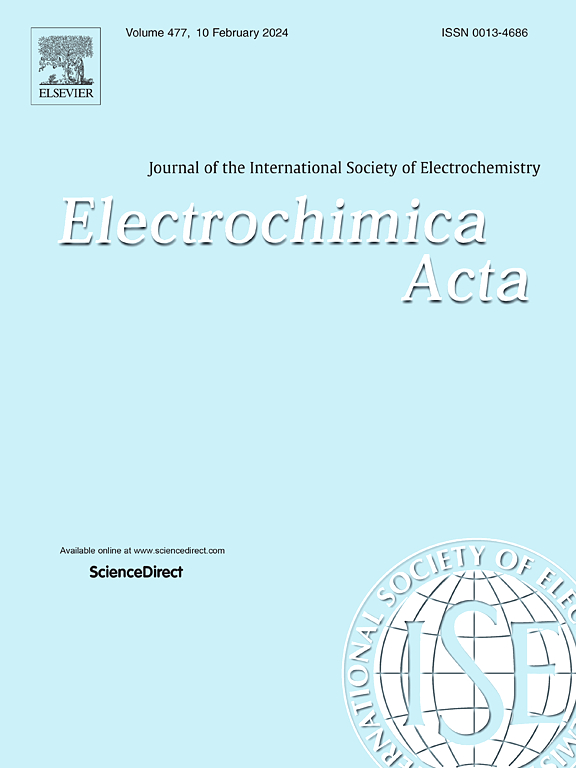Corrosion resistance of coated aluminum bipolar plates for proton exchange membrane fuel cells
IF 5.6
3区 材料科学
Q1 ELECTROCHEMISTRY
引用次数: 0
Abstract
Aluminum is a very attractive material for bipolar plates in proton exchange membrane (PEM) fuel cells due to its low weight, excellent thermal and electrical conductivity, as well as good recyclability. However, to achieve the necessary low contact resistance and corrosion stability, a suitable surface coating is needed. In the present study, two different material systems were evaluated, electroless deposited NiP based coatings and high-power impulse magnetron sputter-deposited (HiPIMS) Ti based coatings. The addition of a 100 nm amorphous carbon (a-C) top-layer on the NiP and Ti based coatings was also evaluated. The electrochemical corrosion behavior of the coatings was evaluated in simulated PEM environments. Potentiodynamic and potentiostatic polarization experiments revealed that the HiPIMS Ti coatings performed better than NiP coatings. The addition of the a-C top-layer on the other hand was found to be detrimental to the Ti based coatings resulting in a corrosion current density of 3.6 µA/cm2. The opposite was observed in the case of the NiP based coatings where the addition of the a-C layer decreases the corrosion current thereby increasing corrosion resistance. Further analysis showed that defects in the coating as well as the presence of a Fe-Si rich particles in the Al substrate were the initiation points for the corrosion attacks to occur.
质子交换膜燃料电池用涂覆铝双极板的耐腐蚀性能
铝具有重量轻、导热性好、导电性好、可回收性好等优点,是极具吸引力的质子交换膜(PEM)燃料电池双极板材料。然而,为了达到必要的低接触电阻和腐蚀稳定性,需要适当的表面涂层。在本研究中,评估了两种不同的材料体系,化学沉积NiP基涂层和大功率脉冲磁控溅射沉积(HiPIMS) Ti基涂层。在NiP和Ti基涂层上添加100 nm非晶碳(a- c)顶层也进行了评价。在模拟PEM环境中对涂层的电化学腐蚀行为进行了评价。动电位和静电位极化实验表明,hiims Ti涂层性能优于NiP涂层。另一方面,发现添加a- c顶层对Ti基涂层有害,导致腐蚀电流密度为3.6 μ a /cm2。在NiP基涂层中观察到相反的情况,其中添加a-C层降低了腐蚀电流,从而提高了耐腐蚀性。进一步分析表明,涂层中的缺陷以及Al基体中富铁硅颗粒的存在是腐蚀发生的起始点。
本文章由计算机程序翻译,如有差异,请以英文原文为准。
求助全文
约1分钟内获得全文
求助全文
来源期刊

Electrochimica Acta
工程技术-电化学
CiteScore
11.30
自引率
6.10%
发文量
1634
审稿时长
41 days
期刊介绍:
Electrochimica Acta is an international journal. It is intended for the publication of both original work and reviews in the field of electrochemistry. Electrochemistry should be interpreted to mean any of the research fields covered by the Divisions of the International Society of Electrochemistry listed below, as well as emerging scientific domains covered by ISE New Topics Committee.
 求助内容:
求助内容: 应助结果提醒方式:
应助结果提醒方式:


